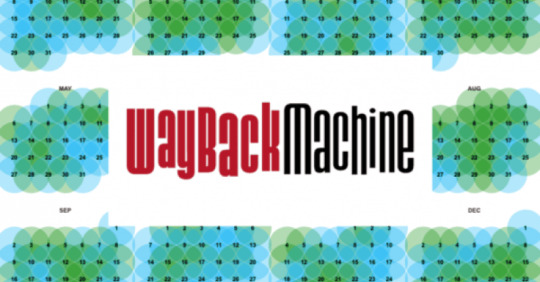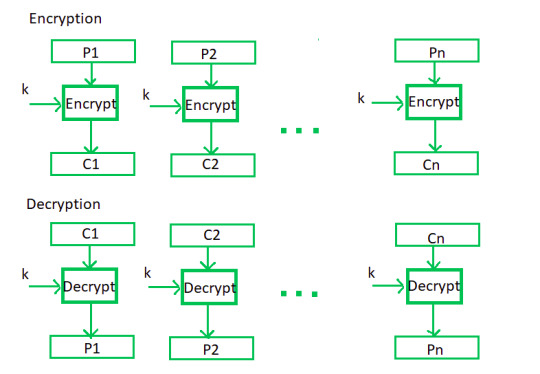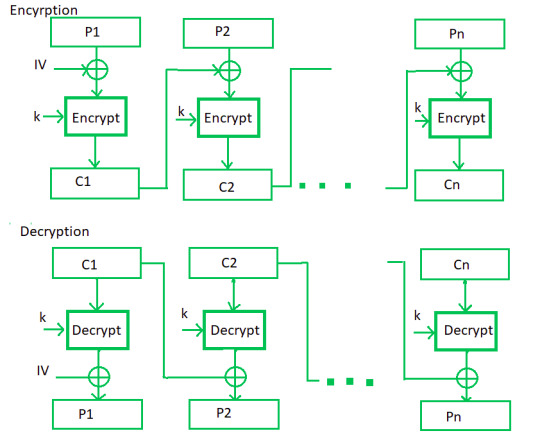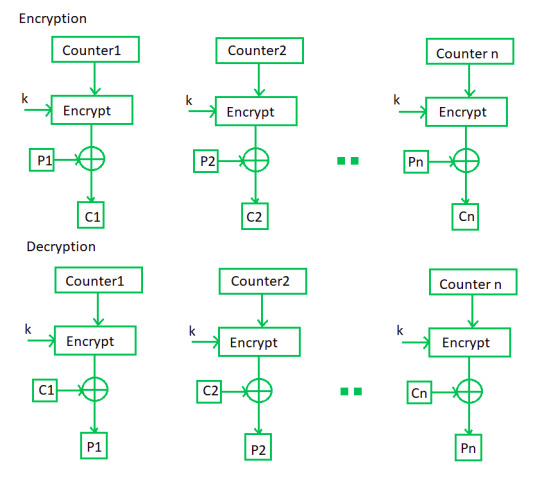#cryptocurrency Book My Show Script
Explore tagged Tumblr posts
Text
The Cost of Trust: Why Bitcoin Was Inevitable

Every empire collapses under the weight of its own lies. Ours just happens to print theirs on paper.
For centuries, money has demanded trust. Trust in kings. Trust in banks. Trust in central banks. We were told the system worked, that the dollar was strong, that inflation was natural. We trusted the experts, the economists, the suits behind the curtain. But time and again, that trust has been betrayed.
First, they backed our money with gold. Then they removed the gold. Then they removed the brakes. By 1971, the U.S. dollar was no longer backed by anything but promises. And when the promises broke, they printed more. More money, more debt, more control. And somehow, we were expected to say thank you.
The truth is this: every fiat system ends in the same way—with the people holding the bag while the architects slip out the back door. We’ve seen it in Zimbabwe, Venezuela, Argentina. And we’re watching the slow bleed happen again across the so-called "developed" world. Wages stay flat. Prices climb. Savings evaporate. The middle class is quietly being erased.
Meanwhile, the top gets richer. Insiders play with house money. The system isn’t broken. It’s working exactly as designed—to benefit those closest to the money printer and drain everyone else. You work harder, but your money works less. And when the next crisis hits, they bail out the banks again, not the people.
But something changed.
In 2009, during the smoldering aftermath of the last financial crisis, someone—or someones—built a way out. Bitcoin didn’t ask for your permission. It didn’t ask for your trust. It offered something different: rules without rulers. A system where no central authority could inflate away your time, your effort, your life’s work.
Bitcoin flips the script. Instead of trusting humans, it relies on math. Instead of secrecy, it offers transparency. Instead of inflation, it has hard-coded scarcity. It’s not perfect—but it doesn’t pretend to be fair while rigging the game behind closed doors. It’s honest money in a dishonest world.
Proof-of-Work is more than a protocol. It’s a philosophy. A declaration that truth must be earned, not granted. That value comes from effort, not decree. Bitcoin didn’t just show up—it emerged, precisely when it was needed most. And for many of us, it felt like destiny.
Because once you see how broken the system is, you can’t unsee it. Once you understand that the cost of trust is your future, your time, your children’s chances—you realize why Bitcoin was not just a good idea. It was inevitable.
The cost of trust was too damn high. So we built something better.
Tick tock. Next block.
Take Action Towards Financial Independence
If this article has sparked your interest in the transformative potential of Bitcoin, there’s so much more to explore! Dive deeper into the world of financial independence and revolutionize your understanding of money by following my blog and subscribing to my YouTube channel.
🌐 Blog: Unplugged Financial Blog Stay updated with insightful articles, detailed analyses, and practical advice on navigating the evolving financial landscape. Learn about the history of money, the flaws in our current financial systems, and how Bitcoin can offer a path to a more secure and independent financial future.
📺 YouTube Channel: Unplugged Financial Subscribe to our YouTube channel for engaging video content that breaks down complex financial topics into easy-to-understand segments. From in-depth discussions on monetary policies to the latest trends in cryptocurrency, our videos will equip you with the knowledge you need to make informed financial decisions.
👍 Like, subscribe, and hit the notification bell to stay updated with our latest content. Whether you’re a seasoned investor, a curious newcomer, or someone concerned about the future of your financial health, our community is here to support you on your journey to financial independence.
📚 Get the Book: The Day The Earth Stood Still 2.0 For those who want to take an even deeper dive, my book offers a transformative look at the financial revolution we’re living through. The Day The Earth Stood Still 2.0 explores the philosophy, history, and future of money, all while challenging the status quo and inspiring action toward true financial independence.
Support the Cause
If you enjoyed what you read and believe in the mission of spreading awareness about Bitcoin, I would greatly appreciate your support. Every little bit helps keep the content going and allows me to continue educating others about the future of finance.
Donate Bitcoin:
bc1qpn98s4gtlvy686jne0sr8ccvfaxz646kk2tl8lu38zz4dvyyvflqgddylk
#Bitcoin#SoundMoney#FiatIsTheProblem#Hyperinflation#Decentralization#Trustless#FinancialRevolution#CryptoPhilosophy#ProofOfWork#AustrianEconomics#MoneyPrinterGoBrrr#BitcoinFixesThis#WakeUp#DigitalGold#MonetaryHistory#TheCostOfTrust#NextBlock#TickTockNextBlock#BitcoinEducation#UnpluggedFinancial#financial empowerment#blockchain#finance#globaleconomy#digitalcurrency#unplugged financial#financial education#cryptocurrency#financial experts
6 notes
·
View notes
Text
This day in history

On September 22, I'm (virtually) presenting at the DIG Festival in Modena, Italy. On September 27, I'll be at Chevalier's Books in Los Angeles with Brian Merchant for a joint launch for my new book The Internet Con and his new book, Blood in the Machine.

#20yrsago Verisign is damage: route around it https://web.archive.org/web/20030924211055/https://www.wired.com/news/technology/0,1282,60473,00.html
#20yrsago Al Franken’s Supply-Side Jesus https://web.archive.org/web/20030923212204/https://buzzflash.com/contributors/03/09/17_franken.html
#20yrsago Kevin Werbach’s kick-ass spectrum paper https://werbach.com/research/supercommons.pdf
#15yrsago RIAA wants to fine lawyer who defends file-sharers for blogging about it https://www.wired.com/2008/09/riaa-decries-at/
#15yrsago Infographic shows Wall Street’s losses https://archive.nytimes.com/www.nytimes.com/interactive/2008/09/15/business/20080916-treemap-graphic.html
#15yrsago How SEC rule-exemptions led to the Wall St collapse https://bigpicture.typepad.com/comments/2008/09/regulatory-exem.html
#10yrsago Expanded “Welcome to Bordertown” audiobook, with @neil-gaiman, Steven Brust, Ellen Kushner and more https://web.archive.org/web/20140620215953/https://www.bordertownseries.com/audio.html
#15yrsago Testimony of Troy Davis, on death row in Georgia https://web.archive.org/web/20080919061107/http://www.protectthehuman.com/videos/hear-troy-davis
#10yrsago Script for the Gong Show movie https://web.archive.org/web/20131125112945/http://www.bloodyrarebooks.com/pages/books/5987/sr-chuck-barris-robery-downey/the-gong-show-movie-original-screenplay
#10yrsago Ten notes on communication from John Scalzi https://whatever.scalzi.com/2013/09/16/speech-conversation-debate-engagement-communication/
#10yrsago Rasl: dark comic from Bone creator Jeff Smith https://memex.craphound.com/2013/09/17/rasl-dark-comic-from-bone-creator-jeff-smith/
#5yrsago Photos: Hong Kong Disneyland in the aftermath of Super Typhoon Mangkhut https://disneyandmore.blogspot.com/2018/09/photos-hong-kong-disneyland-devastated.html
#5yrsago Ajit Pai: California net neutrality law is “illegal” https://arstechnica.com/tech-policy/2018/09/ajit-pai-calls-californias-net-neutrality-rules-illegal/
#5yrsago North Carolina Verizon customers, trapped by Hurricane Florence, say they’re being throttled and upsold https://www.reddit.com/r/LateStageCapitalism/comments/9glj90/big_shout_out_to_verizon_for_throttling_data_for/
#5yrsago Anatomy of a Reddit cryptocurrency spam-factory https://www.vice.com/en/article/438v7j/inside-a-reddit-sockpuppet-operation-spam-upvote-shadowbanned
#5yrsago Georgia Republican introduces legislation to kill PACER, the outrageous paywall around the US justice system https://arstechnica.com/tech-policy/2018/09/new-bill-would-finally-tear-down-federal-judiciarys-ridiculous-paywall/
#5yrsago Birtherism for everyone: Kansas woman told birth certificate can’t be used for passport renewal https://web.archive.org/web/20180911045911/https://www.kctv5.com/news/kansas-woman-told-birth-certificate-wasn-t-enough-to-prove/article_144c19aa-b50f-11e8-94f5-6b921312a97a.html


5 notes
·
View notes
Text

Challenge 50,000 fifty thousand dollars in management - prop company.
Challenge 50,000 fifty thousand dollars in management - prop company. The point is that you undergo training, pass an exam on the testnet of a leading exchange on commissions on MEXC futures, and after trading with small real money, you receive an amount from 1,000 to 50,000 US dollars to manage in order to earn profit. You will need to gradually confirm your qualifications so that I, as a guarantor and your risk manager, will be convinced of your competence and quality of trades (correctly executed trading operations in accordance with the trading instructions I transmit to you - a clear strategy, there is an example in the @dogestop challenge)
Download the book for free - my manual - instructions for careful trading of Bitcoin on futures, written by me back in 2018, but shortened and improved in essence - the very strategy of trading on the cryptocurrency exchange with the BTCUSDT trading pair, which allows you to learn to control emotions and risks and still force yourself not to be greedy and follow my rules established by gurus and experts in the field of making money trading with leverage (cross margin x21 - i.e. having 1000 dollars you make a purchase of 21000 minus costs (trading commission in in the amount of 0.01% of this amount, which is 2.1 dollars for opening and 2.1 for closing + a small spread - in a quiet market the spread on average differs by 5 dollars difference, in a mega-active market - quick losses and price rises, which is the main reason - knocking out stops, from 5 to even 20 dollars difference in price, i.e. with a bet of 21 thousand dollars this is + 20 dollars in a commission of 2.1% and you need to be prepared for this).
Course worth 10k USDT - free
The training course, for which the so-called trading gurus, ala Gerchik, pay from 7 to 20 thousand dollars, is provided completely free of charge for my referrals (those who have subscribed to my referral links for the challenge on the MEXC GATEIO GOODCRYPTO robot exchanges).
Statistics from screenshots - profitability 200-300% per month
I show you real reports from my trading deposits, where I trade orders for 5-10-20 and up to 2 million dollars and show positive statistics on the growth and expansion of the deposit. This is all true and real trading operations, which I confirm with official statistics from the exchange and which are stored in the exchange account forever and are available for online demonstration.
Trading robots Moonbot and GoodCrypto, moontrader, special scripts for browser trading (Python), hooks for TradingView transmitting signals from PineScript to Moonbot for trading automation (autotrading, instructions are given in the second test manual provided from one of the trading schools).
Ready-made strategies for moonbot and moontrader, which allow you to automate earnings and teach the client how to earn income from auto-trading cryptocurrency. These products are expensive to purchase - a moonbot costs 0.15BTC and a moontrader subscription costs $100 per month. But for beginners, I recommend GoodCrypto VISA payment, the cost is $299, lifetime license. The reason for preference is the official product with a guarantee, and not just a boxed version from the anonymous creators of moonbot and moontrader. You decide. I use both products, incl. Python scripts, webhooks and I hire programmers and traders to improve their trading algorithms and indicators.
Bonuses for registration and KYC up to $500 per 10k deposit and up to 100 per $1500 deposit. I am officially the chairman of the MEXC and GATEIO exchanges and provide my clients with amazing promotions and discounts - such as a deposit of 10k USDT MEXC + $500 discount on futures trading commission. There are similar promotions on GATEIO, which I regularly publish in my channel @dogestop
Since February 2024, I have been running a YouTube channel and podcast, links to which I provide in the channel and you can view unique author’s information from a trading expert, a professional in his field and a guru of both spot and futures algorithmic trading. My nickname on telegram is @niko21mln and on social networks YouTube, Tiktok, Instagram, Twitter, etc. 21mln (21mlns).
0 notes
Text
Podcast Recommendations

We find ourselves in unprecedented times so I curated this list of podcast recommendations of shows that will inspire you, provoke you, or make you laugh (or cry). With more of us (shout out essential workers) staying at home amid these anxious times there is need and yearning for connection. Let’s connect through the most fundamental human art form storytelling, stories provide us with a means to connect, inspire, and many more wonderful things. This list was curated with my personal favorite podcasts that I believe everyone will find interesting featuring shows about big ideas, to shows about the small interpersonal stories that tug at your heartstrings. So, let’s find a new podcast to binge!
Ministry Of Ideas

A small podcast about big ideas “that shape our society” from spiritual machines and transhumanism to the need to have an economy based on grace, this podcast tackles the big questions of society and definitely will engage you intellectually and broaden your perspective on various interesting topics.
Lore

A thrilling podcast about the dark side of history every two weeks host Aaron Mahnke explores true life scary stories. Well produced and well narrated this podcast is a very entertaining podcast that will keep you on the edge of your seat.
Myths and Legends

Jason Weiser brings humor to classic myths and legends that we may or may not be familiar with. Jason Weiser narrates myths from different cultures from classical Greek to India and everything in between, think you know these classic stories? Well, listen to these classic stories with a witty spin.
Serial/This American Life


This American Life is a podcast about stories specifically American stories with content so diverse it’s hard to put into a few sentences. Check this podcast out for great stories that can inspire you, make you laugh and can definitely make you cry.
Serial is a podcast from the creators of This American Life is another podcast about stories, Serial takes one story over a season exploring different angles and depths of the particular story making it an engaging podcast that millions of listeners have enjoyed.
Civics 101

A podcast about civics, civics is so important to our lives that a podcast refreshing us about how our government works is so important. Even if you do not consider yourself a political person you should at least have fundamental knowledge of how government works and this podcast is a great resource.
This Land

An assassination in 1889 and 1999 murder case crimes decades apart play into an important supreme court case in 2019 that involves half of Oklahoma and five tribes. This Land is a limited series podcast that explores the background of a supreme court case that could be the biggest tribal land restoration.
5-4

The supreme court sucks! According to this podcast anyway, From the people who brought you Slow Burn this podcast explores different landmark court cases that involve hot topic issues like affirmative action, gun rights, and campaign finance hosts Peter, Michael, and Rhiannon breakdown the ideological battles in the courtroom through a progressive lens.
Wolverine Podcast

A scripted podcast from Marvel featuring one of its cornerstone heroes Wolverine, for my comic book fans and non comic book fans Wolverine the Long Night is a great gateway into the world of scripted podcasts.
The Left Right Game

A scripted podcast starring and co-produced by Tessa Thompson, the engaging story is worth a listen but it is backed up by amazing production with immersive audio; this story offers not just an suspenseful mystery story but an experience.
Jemele Hill Is Unbothered

An Original Podcast on Spotify featuring award winning journalist Jemele Hill. Jemele Hill interviews a who’s who in the entertainment industry but also politicians and activists to have interesting conversations.
Becoming Wise

In short episodes, most are less than 10 minutes, host Krista Tippett explores various topics that will make you wiser through the many interesting conversations she has with interesting people from Brene’ Brown to John Lewis become more wise with this podcast.
Optimal Relationships Advice

Optimal Living Daily is an audioblog where they narrate content to you and this particular audioblog is about relationships. And not just romantic relationships, although those are covered too, but other relationships everything from friendships and parenting. Get the best relationships content read to you for free, best deal ever.
How’s Work With Esther Perel

Couples therapist Esther Perel explores relationships at the workplace, from startups to family business and everything in between. In one time therapy sessions between co workers, co founders, and colleagues Perel unpacks the invisible forces that impact our relationships at work.
Good For You

Comedian Whitney Cummings interviews guests (friends, comics, celebs etc) every week. These interviews are never boring as Cummings comedic background is in full effect with every interview, listen for laughs….and more laughs.
Good One A Podcast About Jokes

A podcast about jokes sounds funny right but it is funny and informative. What makes a good joke? That is what this podcast is all about as comics break down their best jokes and find out what makes a good joke, you might see your comedic skills improve too.
Zig Zag

A business podcast about the changing course of capitalism? Sign me up, this podcast hosted by Manoush Zomorodi and Jen Poyant this podcast will help you understand a multitude of things from cryptocurrency to identity at work and how work is changing plus many more pertinent topics to the modern workplace and modern life.
-Shawn
1 note
·
View note
Video
CRYPTOCURRENCY BOOK MYSHOW READY MADE CLONE SCRIPT
0 notes
Text
BBC: “BigBlackOctoberSurprise” by Paul Outlaw in collaboration with Sara Lyons, Jonathan Snipes, and Adam J. Thompson

Badly Licked Bear on BigBlackOctoberSurprise
“The distance between us is not one of space, but of time.” You have always been here. You were born here. It is likely that you will die here. But you are only sometimes aware of that. Some are more aware - much more - of this truth. It might do you well to listen. The call is coming from inside the house….
BigBlackOctoberSurprise is a story told from a certain interior, the interior of the body. It is told from deep inside the gristly, scarred entrails of the American body politic. Imprisoned within a series of visceral chambers, Outlaw shuffles the deck of past, present, and future, ultimately demanding release not from one’s own body, but from the body politic wherein one was both born and is, ultimately, consumed.
The exterior of this body in which we discover ourselves, whose constant motion abrades us, dissolves us, and ejects that which remains, is beyond our direct experience. Our reality is deep inside, that, even as it grows harder and withers more by the day, the military march of its heart deafens us. It would be generous to name the condition here as twilight. If there is a light at either end of the tunnel, it is a light that will not shine upon our living flesh.
That there is a sweet-scented exterior - the space beyond and the time beyond that which is carceral and corporeal - is known to some, as it is not beyond the dreams and necessity of desire that blossoms in pain as it is passed from body to body for generations. That future demands not that one weather acidic, false-promises of release and salvation, but that our very life - all life - depends on being both indigestible and willing to cut passage to the light, blood-shiny and wet.
Badly Licked Bear was strongly considering wearing a mask for the remainder of their days, during all public life, before it was cool. An avid birdwatcher, they see Black Swans everywhere.

Lauri Scheyer on BigBlackOctoberSurprise
Cryptocurrency—a stand-in for a stand-in—came to mind as I bought “a ticket” from the restricted space of my computer. I wonder how it would have been different to watch the piece, this play about the black male body in restricted spaces and restricting guises, as it was first workshopped, in a theatre. But how better to watch a play about isolation and separation than from our own cells? I thought about witnessing the life squeezed from George Floyd on video—about the positions of onlookers in front of Cup Foods, the police, with their bodycams, or Darnella Frazier. “BBOS” is about the violence of these multiple perspectives; it's about seeing, being-told, and then re-told.
Outlaw tells a different tale of a black man's murder. This time the context is the dirty-secret consensual sex (one of the ironically framed ‘big surprises’ of the title) between an enslaved black man and white plantation owner. The men were observed (surprise!) by the plantation owner’s wife who then surreptitiously (surprise!) ordered the dismemberment and murder of the enslaved man. Being-seen and being-told. We ask what we see and from where, and how this position impacts what we feel and understand.
A white woman opens the play claiming, “I am Paul Outlaw,” but this is not a game show of “true identity,” or the territory of “I am Spartacus” or “We are the World.” Our sense that she is not Paul Outlaw is only intensified by her claim that she is. When we see Paul Outlaw at the end of the play, we have seen him in multiple guises—white woman, Kafkaesque vermin, potent black male body—and in multiple enclosures—a cell, slave quarters, pandemic-era virtual square. Throughout, the black male body is universalized as a perceived instrument of aggression, and at the same time it is almost infant-like in its helplessness and guilelessness—another trope turned on its head. Now, at last, we see the presumably autobiographical Paul Outlaw (or as close to him as we can get), and we understand the extent to which no one can inhabit Paul Outlaw but Paul Outlaw himself.
“You ain’t gonna bother me no more, no how,” Billie Holiday sings, at the beginning and end of the performance, but this remains wishful thinking. We have watched “Paul Outlaw” shape-shift, only to finally become “himself.” And yet we can’t un-forget the anonymizing and objectifying we've just witnessed.
A command rings in my memory : “Get out of here!” Is it a note-to-self, or a command from outside? My memory is of a body not standing vertically of its own power: the body is crouching, writhing on the ground, in a fetal position, seated in a chair. Big black cock to big black cockroach—their threat and vulnerability. The ambiguity and bivalence of both symbols.
“This is not intermission, by the way, and it’s definitely not the end.” I’m waiting for his next production.
Based in Changsha, Los Angeles, and Chicago, Lauri Scheyer is Xiaoxiang Distinguished Professor and British and American Poetry Center Director at Hunan Normal University. Her most recent books are Theatres of War: Contemporary Perspectives (Methuen Drama/Bloomsbury) and A History of African American Poetry (Cambridge University Press).

BBC: “BigBlackOctoberSurprise” was presented virtually at REDCAT October 22-31, 2020. Concept, performance, and script by Paul Outlaw. Directed by Sara Lyons, with sound by Jonathan Snipes and video by Adam J. Thompson.
Paul Outlaw is a Los Angeles based theater maker, lyricist and vocalist. For more about his psychedelically Black, relentlessly queer visions, please visit outlawplay.com.
0 notes
Text
2018-04-06 03 SEO now
SEO
Ahrefs Blog
7 Actionable Ways to Loot Your Competitors’ Backlinks
How many websites are mining cryptocurrency? We analyzed 175M+ domains to find out.
9 Actionable Ways To Find Anyone’s Email Address [Updated for 2018]
White Hat SEO: How to Play by the Rules and Win
How to Find and Fix Keyword Cannibalization Issues (in Seconds)
ClickZ
“Trading can be fun”: A look at TradeStation’s omnichannel rebrand
How should your business approach content creation?
Real-time advisor brands: Mobile customers usher in a new age of AI assistance
Augmented reality, outer space and emerging technology: How USA TODAY is revolutionizing journalism
Helping you choose the right SEO tool
Local SEO guide
Google’s Love/Hate Relationship With Being Human
Hacked Site Manual Action Report from Google? Try Bing To Find It
Peace Out To You, Sugar Rae!
Who Is Next In Local Listings Management?
A NodeJS Script for Accessing the Google Search Console API
Moz
How to Make Effective, High-Quality Marketing Reports & Dashboards
The Guide to Local Sponsorship Marketing - The 2018 Edition
How to Target Featured Snippet Opportunities - Whiteboard Friday
MozCon 2018: The Initial Agenda
Just How Much is Your Website Worth, Anyhow? An Easy Guide to Valuation
Reddit SEO
How to attract people to my website when they search a specific location that isn't my location?
software that can summarize a article automatically? 7 sentences or less
Do We Need SEO in the Future?
Wordpress vs. No CMS
Need Suggestions for forum submussion
SEO Book Blog
Left is Right & Up is Down
Grist for the Machine
Virtual Real Estate
Rank Checker Update
DMOZ Shut Down
SEO by the Sea
Related Questions are Joined by ‘People Also Search For’ Refinements; Now Using a Question Graph
Google’s Mobile Location History
Does Google Use Latent Semantic Indexing?
Google Targeted Advertising, Part 1
Google Giving Less Weight to Reviews of Places You Stop Visiting?
Search Engine Journal
SEO for Rich Results: How to Find & Fix Structured Data Errors by @ab80
4 Pillars of a Successful Legal Content Strategy by @xandervalencia
A Winning Formula For B2B Content Creation by @alexanderkesler
Facebook Makes it Easier to Split Test Ads by @MattGSouthern
Bing Ads Introduces Price Extensions by @MattGSouthern
Search Engine Land
Google patent on related entities and what it means for SEO
Final call to enter the 2018 Search Engine Land Awards
SearchCap: Bing Ads extensions, Apple hires Google exec & local image bug
In big win, Apple hires Google AI chief John Giannandrea away from Google
7 ways to turn a webinar into a stream of link-attracting content
Search Engine Roundtable
April 2018 Google Webmaster Report
Google SEO Snippets Video: Multiple Sitemap Files
SEO: Does Google Treat Content With Quotes Or Brackets Differently?
Google Uses Many Signals To Know What & If To Show Dates In Search Snippets
Bing Ads Price Extensions
Search Engine Watch
How to expand search marketing reach in the slow season, part 1: Quora
Technical SEO vs content marketing: Which should SEOs focus on?
A quick and easy guide to meta tags in SEO
Hyperlocal SEO: What is it, and how can you make sure you do it right?
AI and machine learning: What you do and don’t need to know for SEO
Searchmetrics Blog
Unwrapping the Secrets of SEO: Google Mobile-First Rollout Creates Opportunity to Profit or Perish
Memo to Modern Marketer: Seven Tips to Successfully Tag-Teaming Your Search and Content Strategy
Universal Search 2018: 5 Facts for Online Marketers
Google Core Algorithm Update: The Phantom Comes Out of the Shadows
NCAA March Madness: Painting the Court With Numbers
Yoast
Yoast conference update: Where were we in March?
Caroline’s Corner: Finding inspiration for your next blog post
SEO basics: The difference between tags and categories
Yoast SEO 7.2: Fixes and improvements
Is Fact Check for Yoast SEO a joke?
1 note
·
View note
Text
Week 6 Evening Lecture
Extended seminar - Web
HTTP - requests and response (html payload) HTML - response packet Javascript - script tags are embedded Database/SQL - used for querying database eg. browser sends an HTTP POST request to the server with the username and password... HTTP Cookies/ Sessions - once logged in the server will generate a session cookie ID that's unique for the user Session hijacking - steal someone's cookie and put in your web browser to gain access to that person’s account
XSS Cross-site scripting - an attack in which an attacker injects data, such as malicious script into content from websites.
What you can do? Can steal cookies and modify elements. Inject memes into pages, steal pages
Google got hit by XSS There are 2 types of XSS stored CSS and reflected XSS.
Stored CSS (a.k.a non-persistent XSS) - you enter data which is stored in the app and in response to another request it will be returned. The data contains JS code.
https://blog.sqreen.com/reflected-xss/
Reflected XSS (or also called a non-persistent XSS attack) - malicious script bounces off of another website to the victim’s browser. It is passed in the query, typically, in the URL. It makes exploitation as easy as tricking a user to click on a link.
<img src = 'x' onerror.... SQL Injections The website uses HTML, tells your web browser how to display information
An SQL injection is inserting SQL statements in the user input, to be executed. An example is SELECT … OR 1=1 –
The dash ‘-’ at the end is to comment out the rest of the code. What to input into login form? 'or 1=1 -
Blind SQL Injection word; ls # It is a type of SQL attack that queries the database via true or false questions. The responses will be based on the application.
Command Injection
Command injection is an attack where arbitrary commands are executed on the host operating system via a vulnerable application.
Cross-Site Request Forgery This is an attack on an authenticated user i.e. they are logged in on a website somewhere AN eg I log in to a banking site and want to transfer some money Send a request to the server in the appropriate form this is sent with my cookie to the bank A website will automatically request a <img> with ... Got distracted and clicked on a dodgy website If an attacker knows the format of the bank request, they can hide
Cross-Site Request Forgery Defences Primary mitigation is with tokens Generate a suitably random toke, store value server-side Send token to the user, expect this token as part of any user request In a GET request, this token will be part of the URL The website expects something like this as the correct request Important: If a website has XSS vulnerabilities, CSRF mitigations are pointless! Could be used to obtain generated token and use it
Extended seminar - Cryptocurrency
Payment process: Current versus Bitcoin Current payment systems require third-party intermediaries that often charge high processing fees...
Built using cryptographic principles Difficult to fake transactions Not controlled by a central authority
Blockchain It is a method of storing data A chain of chronologically linked blocks, each block is linked to the previous Blocks contain: data, hash, hash of previous No 2 blocks will have the same hash meaning each block have a unique hash
Data Consists of hundreds of transactions
Hashes The block's hash summarises the data into a combination of letters and numbers Sha-256 hashing algorithm IF a transaction in the block is changed, the hash will change E.g. Alice now changes the amount to $ 50
1. When a transaction is made, it isn't immediately added. It is placed
We hash the block header along with an extra number, the nonce When we hash, we hope the block hash value is below a certain target value A nonce is a random number...
Proof of stake Growth of mining pools could eventually lead back to a centralised system
PoW mining uses excessive amounts of electricity PoS algorithm attributes mining power to proportion of total bitcoins held(plus other various factors) rather than computing power Rewards are transaction fees rather than new cryptocurrency
Types of cryptocurrency:
Bitcoin Most popular Uses SHA-256 hashing algorithm Very processor-intensive and complex
Litecoin Uses Scrypt hashing algorithm 4 times faster than SHA-256 But much more memory intensive
Facebook Libra Centralised architecture - Libra will be managed by the Libra Association, having more control over the blockchain, but can we trust Facebook?
Why so many cryptocurrencies Different interpretations and implementations of blockchain technology ICO boom
Privacy Blockchain doesn't have a strong concept of 'identity' - uses (public, private) key pairings
Doesn't exempt transactions from tracing Two main ways: Relations between addresses - 'Inferring' identity Interactions between nodes & users
Case Study - Monero Unlinkability _> "stealth addresses' with 'view' keys Transaction mixing -> Ring signatures COncealing transaction amounts ->RingCT signatures Hiding source IP and blockchain usage -> The Kovri Project
MtGox user database began circulating online - plain text email addresses - Usernames - MD5 HAshed passwords - unsalted
Future of Cryptocurrency
Adoption - overcoming resistance from people, established financial institutions, governments, ease of use, volatility
Threats - Quantum computers means faster hashes
Hw Find a string whose SHA-256 hash starts with "6841" (in base 16)
Hint: use a loop and brute force it (don't try to reverse the hashing algorithm)
How much longer would it take to find a string whose hash starts with "68416841"?
HW Read up 'Block Modes" - only need to learn/understand ECB CBC, CTR
Mission impossible red box - is in the exam?
Authentication
Can not fake your fingerprints, the way you walk, face
Richard Buckland’s Lecture
Symmetric cipher - encryption and decryption keys are the same
https://searchsecurity.techtarget.com/definition/asymmetric-cryptography
Asymmetric (a.k.a public-key cryptography) - uses public and private keys to encrypt and decrypt data. The public is for encryption and the private key is for decryption.
90 million dollars taken by an impersonator with a silicone mask. How can you know its really him?
Identification vs authentication
Identification - claiming you are somebody
Authentication - proving that you are who you say you are
How can a computer make a decision about whether a person is the person they claim who they are?
Preloaded data - photographs, but people may look similar.
People - can identify by shared experiences, but computers cannot be taught this.
Factors
It’s easy to show you know a password, but it’s hard to show that no-one else does.
Something you know Passwords, PINs (personal identification number). These are very common and very easy to crack.
Something you have Smart cards are used with a pin to provide multi-factor authentication
Something you are Fingerprint
TYPE 1 AND TYPE 2 ERRORS:
type 1 - system rejects a known user
type 2 - system accepts an unknown user
Block Cipher Modes
Electronic Code Block
https://searchsecurity.techtarget.com/definition/Electronic-Code-Book
Same plaintext = same ciphertext value. Electronic Code Book is used when a volume of plaintext is separated into several blocks of data, each of which is then encrypted independently of other blocks. It has the ability to support a separate encryption key for each block type. Though, each block can be encrypted in parallel to reduce encryption time.
Cipher Block Chaing
This uses an Initialisation Vector (IV) of a certain length. Each plaintext block is XOR’d with the immediately previous ciphertext block, then passed to the encryption function to be encrypted. This does not have the ability to encrypt blocks in parallel and it is more resistant to cryptanalysis.
Counter Mode
A counter initiated value is encrypted, then XOR’d with the plaintext. This can be done in parallel since each block is independent.
0 notes
Text
Week 6 Evening Lecture
Extended seminar - Web
HTTP - requests and response (html payload)
Session cookie - when you log in, server generates a unique ID for the user.
Session hijacking - cookies can be stolen from a browser, and used to gain access to another person’s account.
XSS
Cross site scripting - attack by injecting data, such as malicious script into content from websites. Can steal cookies and modify elements.
Reflected XSS - user input is immediately returned by a web app. It is possible to include JavaScript code which is executed in the context of the application.
Stored CSS - you enter data which is stored in the app and returned later on in response to another request. The data contains JS code.
e.g. code to steal cookies of users who log in
Samy is my hero - MySpace worm, spread to other websites
SQL injections
SQL injection is inserting SQL statements in the user input, to be executed.
SELECT ... OR 1=1 --
-- is to the comment out the rest of the code
input into login form: ‘ or 1=1 --
Blind SQL (cant see source) - an attacker attempts to exploit an application, but rather than getting a useful error message they get a generic page instead. Can send true or falses to find out if something is true or not.
Command injections - executing code on the host operating system via a vulnerable application
Extended seminar - Cryptocurrency
Cryptocurrency eliminates the third party (bank), money transactions are directly between sender and receiver. This lowers costs. Decentralised
Hard to fake a transaction as it requires many bits of work.
Blockchain
method of storing data
chain of chronologically linked blocks, each block is linked to the previous
blocks contain: data, hash, hash of previous
We can identify blocks by their unique hash
Data - Consists of many transactions
Hashes
SHA-256
If transaction is block is changed, hash will change
Since each block has the hash of the previous block, the next block will show mismatch with the hash in the next block.
Tamper evident - it is computationally hard to recalculate hashes in following blocks
Mining
Mining is creating coins.
When a transaction is made, it is placed into a transaction pool. Miners take a transaction and put it into a block. They hash the block header with the nonce (a random number that is brute forced to create the correct hash).
Proof of stake
Miners work together in mining pools - can work together
PoS algorithm attributes mining power to proportion of total bitcoins held rather than computing power
Types
Bitcoin - most popular, SHA-256, very processor intensive and complex
Litecoin - uses Scrypt, less intensive, but uses more memory
Facebook Libra - Centralised by Libra Association, but can we trust Facebook?
Privacy
Blockchain doesn’t have a strong concept of identity - uses (public, private) key pairings
Can trace back by: relations between addresses, interactions between nodes
Historical flaws
51% attack
Blockchain: the longest chain is the legitimate chain
If you can build your chain faster than anyone else, your malicious chain can become the legitimate one
Verge currency:
Bug to lower hashing difficulty for Scrypt
Hackers could build chains faster
Smart Contracts
Attacker exploited bug in smart contracts - could recursively call a function that repeatedly sent funds
Future of Cryptocurrency
Adoption
overcoming resistance from people, established financial institutions, governments
ease of use
volatility
Threats
Quantum computers - faster hashes
Software that utilises cryptocurrencies
cryptocurrency wallets/exchanges/other software
storing private keys - if taken, they can use your money
Buckland’s Lecture
Symmetric cipher - you have knowledge of the key, it’s used for encryption and decryption
Asymmetric - one for encryption, one for decryption
Go bag - bag you pick up and take in an emergency. What would you put in it?
90 million dollars taken by impersonator with silicone mask. How can you know its really him?
Bugs in the news - sounds like it’s something new, everything was okay in the past. But it’s been there for a long time, we only just discovered it now.
Authentication
Identification vs authentication
Identification - claiming you are somebody
Authentication - proving that you are who you say you are
How can a computer make a decision about whether a person is the French prime minister? Only given information (screen on the wall).
Can have preloaded data - photographs, but people may look similar.
People - can identify by shared experiences, but you can teach computers this as well.
Factors
defense in depth
It’s easy to show you know a password, but it’s hard to show that noone else does.
http://www.pearsonitcertification.com/articles/article.aspx?p=1718488
Something you know
E.g. Passwords, PINs (personal identification number)
These are the most common
Easy to crack
Something you have
E.g. smart cards, tokens
smart cards are used with a pin to provide multi factor authentication
These can be stolen
Something you are
e.g. biometrics - fingerprints, handprints, retinal scans
if a fingerprint is stolen, you can’t change it
Provide the strongest authentication, but is susceptible to errors
type 1 - system rejects a known user
type 2 - system accepts an unknown user
Multifactor authentication
This is when two different authentication factors are used e.g. smart card + pin (something you know and something you have).
Sending confirmation code via SMS. Problem now: most people do things on their phone, so having the phone may give you the account, and the second factor of authentication (SMS).
Hardware attack: injecting signals to the device.
Block Cipher Modes
https://www.geeksforgeeks.org/computer-network-block-cipher-modes-of-operation/
Electronic Code Book (ECB)
This is the simplest block cipher mode.
Each block of plaintext is encrypted with the key to get the next block of ciphertext.

Each block can be encrypted in parallel, thus reducing encryption time.
However, it is prone to cryptanalysis since plaintext and ciphertext are directly related.
Cipher Block Chaining (CBC)
The previous cipher block is XOR’d with the current plaintext block, then passed to the encryption function. The first block uses an initialisation vector.

This improves upon ECB as it is more resistant to cryptanalysis, but we lose the ability to encrypt blocks in parallel.
Counter Mode (CTR)
A counter initiated value is encrypted, then XOR’d with the plaintext.

This can be done in parallel, since each block is independent.
0 notes
Link
Over the years, it’s become popular to claim that you are Satoshi Nakamoto even if you lack a shred of evidence. Although some individuals have tried really hard to prove it, they have always failed to convince the greater community. For instance, a few self-proclaimed inventors of Bitcoin have attempted to generate a signature with a message hash that’s tethered to an early mined block. After a few of these occurrences, a financial transparency startup called Albacore Labs has created a tool that will validate a signature against the genesis block, making it “easier for other people to make similar claims.”
Also Read: Another ‘Satoshi’ Steps Out of the Woodwork, Calls Craig Wright a Liar
Crypto-Babble About Digital Signatures or Hashing Should Not Be Enough
Many bitcoiners will never forget how Craig Wright tried to prove he was Satoshi Nakamoto back in 2016. It all started when the London Review of Books reporter Andrew O’Hagan spent months with Wright and allegedly saw him sign a message tied to a Satoshi Nakamoto address. There was also a series of blog posts Wright wrote that has since been scrubbed from the internet and Wright’s interaction with Gavin Andresen in London. Back in the spring of 2016 Wright also appeared on a BBC video claiming to sign a signature tethered to the first bitcoin transaction.
“My name is Craig Wright and I’m about to demonstrate a signing of a message with the public key that is associated with the first transaction ever done on Bitcoin,” the Australian native stated on May 2, 2016. “So you are going to show me that Satoshi Nakamoto is you?” the BBC reporter asked at the time. “Yes,” Wright replied.
Two men who have claimed to be Satoshi Nakamoto but have yet to provide solid evidence. ‘Satoshin,’ left, and Craig Wright.
After the show aired, veteran cryptographers quickly pointed out that the BBC reporters and Andrew O’Hagan were seemingly duped. The long-winded London Review of Books story that describes O’Hagan’s experience hanging out with Wright for months shows O’Hagan had no clue what Wright was actually signing. Moreover, well-known cryptocurrency developers like Pieter Wuille, Christopher Jeffrey and Greg Maxwell showed the public how Wright pulled off his signing parlor trick.
One of the so-called Satoshi PGP keys Wright signed was provably backdated and other signature attempts have been cited as blatant forgery. Then, last year, a Twitter handle that used the name “Satoshi Nakamoto” tried to create the same signing proof with a message tied to block number 9. Finally, Bitcoin Cash (BCH) developer Amaury Séchet recently shared a hash message on Twitter and claimed to be Satoshi. However, the message was clearly a joke except a few cryptocurrency news outlets ran with the story.
Last November a Twitter handle called @Satoshi tried to sway the community with a signed message tethered to block 9.
Now Anyone Can Prove They Are Satoshi By Signing a Message Tied to the Genesis Block
Since the so-called block 9 signing, Albacore, a team that develops tools to improve financial transparency, has released an application that can tie a message to the Bitcoin genesis block so anyone can attempt to “prove they are Satoshi.”
“With everyone seemingly trying to prove they are Satoshi (looking at you Craig Wright and “Faketoshi twitter”), we’ve decided to make it easier for other people to make similar claims,” explains Albacore.
The startup’s Faketoshi website continues:
Clicking the button below will generate a signature and message hash that will successfully validate against the address that mined the genesis block, which is known to have been mined by Satoshi. Just don’t ask for the plaintext message that generated the hash…(spoiler, we don’t know it either).
Albacore’s Faketoshi tool.
A Faketoshi Signing Tool Benefits the Community by Teaching Bitcoiners to Dismiss Fraudulent Behaviour
In a post that describes the tool’s process, Albacore says people claiming to be Satoshi is nothing new, but Craig Wright is the most “recent cult” following. Albacore says this is due to a serious lack of technical understanding within the blockchain and bitcoin ecosystem. “This leads to situations where the merest mention of crypto-esque jargon like digital signatures or hashing is convincing enough,” the startup’s blog post explains. Albacore notes that people can see that the forged messages are clearly faked because the hash of the message is provided without the actual plaintext message.
“The inputs and outputs of the ECDSA signature and verification operations. Note that in both, the input is the plaintext message that is then hashed within the boxes (the ECDSA algorithm),” explains Albacore.
“So why would the scammer provide the hash of a message and not the message itself? Albacore asks within the essay, before answers its own question: “Because they do not know the message — That would involve them actually knowing the private key and generating a legitimate signature.”
Albacore adds:
Given the one-way nature of cryptographic hashes — The only way to verify this signature is to use a non-standard ECDSA verifier that does not internally hash the message but instead accepts the hash of the message as an input.
Albacore believes the greater community needs to be more vigilant towards pretenders and faked signature attempts.
This week, news.Bitcoin.com reported on another self-proclaimed Satoshi Nakamoto who called Craig Wright a “liar” and stated he could sign a real message in due time. However, just like the slew of other Faketoshis we’ve covered in the past, this one has yet to provide any real proof to the greater crypto community. To some people, these signatures are pretty much meaningless, unless the signer can provide an actual plaintext message or literally move bitcoins that were mined in the early days with a well-known Satoshi address. Even Wright’s open letter saying that he is willing to testify in front of the U.S. Commodity Futures Trading Commission (CFTC) is worthless because none of those regulators understand this technology.
Albacore says tools like the Faketoshi signing application benefit the community as a whole, so they can be more critical towards people attempting blockchain signature parlor tricks and instead “focus on things that advance the space as a whole.”
What do you think about Albacore’s Faketoshi signature tool? Do you think anyone has proven themselves to be Satoshi Nakamoto with these signature tricks? What would make you believe a person is really Satoshi? Let us know what you think about this subject in the comments section below.
Image credits: Shutterstock, Twitter, Pixabay, Albacore, Medium, and Bitcoin.com.
At news.Bitcoin.com all comments containing links are automatically held up for moderation in the Disqus system. That means an editor has to take a look at the comment to approve it. This is due to the many, repetitive, spam and scam links people post under our articles. We do not censor any comment content based on politics or personal opinions. So, please be patient. Your comment will be published.
Tags in this story
Albacore, Amaury Séchet, Andrew O'Hagan, BBC, BCH, bitcoin cash, Bitcoin Core, Bitcoin Creator, BTC, Christopher Jeffrey, Craig Wright, Cryptocurrency, Digital Assets, digital signature, ECDSA verifier, Faketoshi Tool, Gavin Andresen, Greg Maxwell, London Review of Books, N-Technology, PGP Key, Pieter Wuille, Plaintext, Satoshi, Satoshi Nakamoto, Satoshin
Jamie Redman
Jamie Redman is a financial tech journalist living in Florida. Redman has been an active member of the cryptocurrency community since 2011. He has a passion for Bitcoin, open source code, and decentralized applications. Redman has written thousands of articles for news.Bitcoin.com about the disruptive protocols emerging today.
(function(d, s, id) { var js, fjs = d.getElementsByTagName(s)[0]; if (d.getElementById(id)) return; js = d.createElement(s); js.id = id; js.src = 'https://connect.facebook.net/en_US/sdk.js#xfbml=1&version=v3.2'; fjs.parentNode.insertBefore(js, fjs); }(document, 'script', 'facebook-jssdk'));
0 notes
Text
Book Review – CoinGecko’s ‘How to DeFi’
Decentralized Finance (DeFi) is certainly the buzz-phrase in the cryptocurrency world right now. But although we are hearing more and more about the potential of this technological breakthrough to revolutionize the world of traditional finance, many are still unsure of what DeFi actually involves.
CoinGecko has just released its very first book, called ‘How to DeFi’. This book aims to provide an easy entry point for those wanting to learn about the subject.
Why to DeFi
After an obligatory slew of quotes from industry figures, recommending the book as the ideal starting point from which to enter the world of DeFi, we get straight into why it matters.
With over $1 billion worth of assets locked into the DeFi ecosystem it is currently one of the fastest growing sectors in the cryptocurrency space. The most radical change that it promises to bring is the removal of a need for centralized institutions to control the financial system.
The three areas in which DeFi currently aims to improve on centralized banking structures are cost and speed of remittance payments, providing financial services without censorship (including to the 1.7 billion global unbanked), and transparency of governance.
After explaining what DeFi is, the book lists the categories of financial service currently available through it. From stablecoins, lending and borrowing, through exchanges, derivatives and fund management, to lotteries, payments and insurance, every aspect of the current DeFi ecosystem is covered.
How to DeFi
Part Two of the book explains the workings of the Ethereum network, as the most popular platform for DeFi applications. Smart contracts, Ether, and Gas are explained, before looking at the pros and cons of decentralized apps (Dapps).
Finally, different wallet types are compared, with a step-by-step walkthrough of getting up and running on both mobile wallet Argent, and Metamask for desktop. All that done, we move on to Part Three, the deep dive.
Each of the aforementioned categories of DeFi service are given a full chapter, focussing on one or two key providers in each case. We learn about stablecoins through the example of the MakerDAO platform, Compound is used to illustrate loans, decentralized exchanges (DEx) are explained using Uniswap and dYdX, and so on.
Each chapter gives an overview of the services available, with diagrams helping to explain some of the trickier concepts. It then explains how the service works on the chosen example platform, along with a step-by-step guide for those who feel compelled to jump straight in.
The target audience of the book is DeFi beginners, so some of the finer details of the chosen platforms are left out, but the level is generally pitched about right. Does a DeFi novice, for example, really need to know the intricacies of the Maker Protocol’s incentive scheme, or is the fact that it is soft-pegged to the dollar knowledge enough?
Whether to read
While the earlier chapters do a great job of leading a beginner into the world of DeFi, with a wealth of explanations and diagrams, later chapters seem to assume some existing knowledge of the subject.
For example, the chapters on derivatives and fund management will be more useful to those who already understand these concepts in traditional finance. Although, it is perhaps wise not to encourage a beginner to let loose with leveraged derivatives trading, so that may not be a bad thing.
The final challenge was the ‘Dad test’; i.e. could my father, a man in his seventies with only a very basic knowledge of cryptocurrency, gain a reasonable understanding of DeFi, simply through reading this book? I received this message when he was around 50 pages in:
“… although I don’t understand everything I have enjoyed reading it. It is written in a very easy style that I think most people who are interested in the subject would be able to follow.”
Of course, my dad isn’t exactly the book’s target audience, but he still found the information accessible, and felt that someone with a greater background knowledge of cryptocurrency would get more from it. He also liked the step-by-step walkthroughs showing how to perform certain functions on the platforms featured.
The book is certainly well written and thoroughly researched, with links to references used, suggested further reading, and a glossary of terms at the very end.
window.fbAsyncInit = function () { FB.init({ appId: '1922752334671725', xfbml: true, version: 'v2.9' }); FB.AppEvents.logPageView(); }; (function (d, s, id) { var js, fjs = d.getElementsByTagName(s)[0]; if (d.getElementById(id)) { return; } js = d.createElement(s); js.id = id; js.src = "http://connect.facebook.net/en_US/sdk.js"; js.defer = true; fjs.parentNode.insertBefore(js, fjs); }(document, 'script', 'facebook-jssdk')); !function (f, b, e, v, n, t, s) { if (f.fbq) return; n = f.fbq = function () { n.callMethod ? n.callMethod.apply(n, arguments) : n.queue.push(arguments) }; if (!f._fbq) f._fbq = n; n.push = n; n.loaded = !0; n.version = '2.0'; n.queue = []; t = b.createElement(e); t.defer = !0; t.src = v; s = b.getElementsByTagName(e)[0]; s.parentNode.insertBefore(t, s) }(window, document, 'script', 'https://connect.facebook.net/en_US/fbevents.js'); fbq('init', '1922752334671725'); fbq('track', 'PageView'); Source link
The post Book Review – CoinGecko’s ‘How to DeFi’ appeared first on CoinRetreat.
from CoinRetreat https://ift.tt/3bvEb4o
0 notes
Text
CRYPTOCURRENCY BOOK STORE MULTI VENDOR SHOPPING SCRIPT - READYMADE CLONE
Cryptocurrency Book Store Multi Vendor Shopping script that lets startups and entrepreneurs to build their own multi-vendor eCommerce website similar to Amazon, AliExpress, Etsy and many more.Cryptocurrency Integration Book Store Multi Vendor clone is a PHP eCommerce site the customization is designed in the choice of the user requirement, we have built this script with PHP platform where the customization and functionality are more users responsive.This online marketplace website is an intermediary platform that connects ‘X’ number of buyers and sellers for the smooth buying and selling of various products as well as services among them This cryptocurrency eCommerce script is customized with SEO-friendly URL to make easy access of the site, and also, in addition, we provide some additional offer with this script and there is 24×7 technical support team help for your solution .
E-commerce options
UNIQUE FEATURES:
Fully-Automated Email Management 100 percent Customizable Payment process simple To Use Integrated SEO Turn-Key resolution Unlimited Listing sorts MULTI-VENDOR:
The admin will preview the seller’s product. The sellers will add tax info from the front-end. Customers will read the calculable date of the delivery on the merchandise page. Sellers will use Seller-Customer whipper to cover Marketplace menu. PayPal email ID is verified through PayPal API. Support Multi-stores. Custom Field- merchant will add custom field by Marketplace Multi-vendor module and these custom fields can show on Product detail page.
Admin will produce template-based emails for Marketplace which can be used, in keeping with Admin selection.
Admin will realize total sale by every merchant and therefore the admin financial gain from any explicit merchant below “Marketplace Income”. Admin will track the seller’s financial gain, total order, total consumers, and latest order mistreatment dashboard field under edit partner page.
It supports Multi-Lingual feature. Admin/Seller will amendment order standing of every product. Admin/Seller will enter following variety for every product. The client will cross-check with multiple seller’s product at constant time. Journal Theme Compatible every merchant contains a separate merchant profile page edit their profile page on their own merchant will add banner, search brand custom markup language text and conjointly customise store as per any Color theme.
Feedback and review system with interactive star rating. Separate seller’s product assortment. Admin will add commission supported class. merchant will do custom shipping. Automatic approval of product and partners setting within the admin facet. merchant can have own dashboard to manage orders. merchant will add easy and Downloadable product. Admin will prohibit the account menu choices and sequence. Admin will choose the order standing for the vendor. solely designated order standing are utilized by the vendor for dynamic their product order standing.
The admin will assign specific product classes to sellers. The admin pays to any or all sellers promptly mistreatment Mass Pay-out. choose Open cart store for the Marketplace. Login Forgot positive identification Registration Search Manage Profile Sms details In-built CMS Feature made Admin Panel custom Admin panel Creates business directory websites Manage (content pages, email model, icon property) simple to put in, manage, upgrade and support Complete business directory eye catching model to use simple News Publication System Full CSS management Email log details News Feeds Products Live Chat All-in-one platform Notifications Login Credentials Post business advert WALLET USER
register check in choices. Payment entranceway enabled. Check standing Coupon codes. Promotions codes. pocketbook offers credits. Refer a friends Personal my account details with history. Get Email choices. Get SMS choices. Search choice enabled. User pocketbook accessible. …etc.
Contact :
Skype ID : doditsolutions
Email : [email protected] , [email protected]
Link : http://cryptocurrencyintegrations.com/cryptocurrency-book-store-multi-vendor-shopping-script/
0 notes
Text
Book Review – CoinGecko’s ‘How to DeFi’
Decentralized Finance (DeFi) is certainly the buzz-phrase in the cryptocurrency world right now. But although we are hearing more and more about the potential of this technological breakthrough to revolutionize the world of traditional finance, many are still unsure of what DeFi actually involves.
CoinGecko has just released its very first book, called ‘How to DeFi’. This book aims to provide an easy entry point for those wanting to learn about the subject.
Why to DeFi
After an obligatory slew of quotes from industry figures, recommending the book as the ideal starting point from which to enter the world of DeFi, we get straight into why it matters.
With over $1 billion worth of assets locked into the DeFi ecosystem it is currently one of the fastest growing sectors in the cryptocurrency space. The most radical change that it promises to bring is the removal of a need for centralized institutions to control the financial system.
The three areas in which DeFi currently aims to improve on centralized banking structures are cost and speed of remittance payments, providing financial services without censorship (including to the 1.7 billion global unbanked), and transparency of governance.
After explaining what DeFi is, the book lists the categories of financial service currently available through it. From stablecoins, lending and borrowing, through exchanges, derivatives and fund management, to lotteries, payments and insurance, every aspect of the current DeFi ecosystem is covered.
How to DeFi
Part Two of the book explains the workings of the Ethereum network, as the most popular platform for DeFi applications. Smart contracts, Ether, and Gas are explained, before looking at the pros and cons of decentralized apps (Dapps).
Finally, different wallet types are compared, with a step-by-step walkthrough of getting up and running on both mobile wallet Argent, and Metamask for desktop. All that done, we move on to Part Three, the deep dive.
Each of the aforementioned categories of DeFi service are given a full chapter, focussing on one or two key providers in each case. We learn about stablecoins through the example of the MakerDAO platform, Compound is used to illustrate loans, decentralized exchanges (DEx) are explained using Uniswap and dYdX, and so on.
Each chapter gives an overview of the services available, with diagrams helping to explain some of the trickier concepts. It then explains how the service works on the chosen example platform, along with a step-by-step guide for those who feel compelled to jump straight in.
The target audience of the book is DeFi beginners, so some of the finer details of the chosen platforms are left out, but the level is generally pitched about right. Does a DeFi novice, for example, really need to know the intricacies of the Maker Protocol’s incentive scheme, or is the fact that it is soft-pegged to the dollar knowledge enough?
Whether to read
While the earlier chapters do a great job of leading a beginner into the world of DeFi, with a wealth of explanations and diagrams, later chapters seem to assume some existing knowledge of the subject.
For example, the chapters on derivatives and fund management will be more useful to those who already understand these concepts in traditional finance. Although, it is perhaps wise not to encourage a beginner to let loose with leveraged derivatives trading, so that may not be a bad thing.
The final challenge was the ‘Dad test’; i.e. could my father, a man in his seventies with only a very basic knowledge of cryptocurrency, gain a reasonable understanding of DeFi, simply through reading this book? I received this message when he was around 50 pages in:
“… although I don’t understand everything I have enjoyed reading it. It is written in a very easy style that I think most people who are interested in the subject would be able to follow.”
Of course, my dad isn’t exactly the book’s target audience, but he still found the information accessible, and felt that someone with a greater background knowledge of cryptocurrency would get more from it. He also liked the step-by-step walkthroughs showing how to perform certain functions on the platforms featured.
The book is certainly well written and thoroughly researched, with links to references used, suggested further reading, and a glossary of terms at the very end.
window.fbAsyncInit = function () { FB.init({ appId: '1922752334671725', xfbml: true, version: 'v2.9' }); FB.AppEvents.logPageView(); }; (function (d, s, id) { var js, fjs = d.getElementsByTagName(s)[0]; if (d.getElementById(id)) { return; } js = d.createElement(s); js.id = id; js.src = "http://connect.facebook.net/en_US/sdk.js"; js.defer = true; fjs.parentNode.insertBefore(js, fjs); }(document, 'script', 'facebook-jssdk')); !function (f, b, e, v, n, t, s) { if (f.fbq) return; n = f.fbq = function () { n.callMethod ? n.callMethod.apply(n, arguments) : n.queue.push(arguments) }; if (!f._fbq) f._fbq = n; n.push = n; n.loaded = !0; n.version = '2.0'; n.queue = []; t = b.createElement(e); t.defer = !0; t.src = v; s = b.getElementsByTagName(e)[0]; s.parentNode.insertBefore(t, s) }(window, document, 'script', 'https://connect.facebook.net/en_US/fbevents.js'); fbq('init', '1922752334671725'); fbq('track', 'PageView'); Source link
The post Book Review – CoinGecko’s ‘How to DeFi’ appeared first on Coin First.
from Coin First https://ift.tt/33VWgpV
0 notes
Text
Book Review – CoinGecko’s ‘How to DeFi’
Decentralized Finance (DeFi) is certainly the buzz-phrase in the cryptocurrency world right now. But although we are hearing more and more about the potential of this technological breakthrough to revolutionize the world of traditional finance, many are still unsure of what DeFi actually involves.
CoinGecko has just released its very first book, called ‘How to DeFi’. This book aims to provide an easy entry point for those wanting to learn about the subject.
Why to DeFi
After an obligatory slew of quotes from industry figures, recommending the book as the ideal starting point from which to enter the world of DeFi, we get straight into why it matters.
With over $1 billion worth of assets locked into the DeFi ecosystem it is currently one of the fastest growing sectors in the cryptocurrency space. The most radical change that it promises to bring is the removal of a need for centralized institutions to control the financial system.
The three areas in which DeFi currently aims to improve on centralized banking structures are cost and speed of remittance payments, providing financial services without censorship (including to the 1.7 billion global unbanked), and transparency of governance.
After explaining what DeFi is, the book lists the categories of financial service currently available through it. From stablecoins, lending and borrowing, through exchanges, derivatives and fund management, to lotteries, payments and insurance, every aspect of the current DeFi ecosystem is covered.
How to DeFi
Part Two of the book explains the workings of the Ethereum network, as the most popular platform for DeFi applications. Smart contracts, Ether, and Gas are explained, before looking at the pros and cons of decentralized apps (Dapps).
Finally, different wallet types are compared, with a step-by-step walkthrough of getting up and running on both mobile wallet Argent, and Metamask for desktop. All that done, we move on to Part Three, the deep dive.
Each of the aforementioned categories of DeFi service are given a full chapter, focussing on one or two key providers in each case. We learn about stablecoins through the example of the MakerDAO platform, Compound is used to illustrate loans, decentralized exchanges (DEx) are explained using Uniswap and dYdX, and so on.
Each chapter gives an overview of the services available, with diagrams helping to explain some of the trickier concepts. It then explains how the service works on the chosen example platform, along with a step-by-step guide for those who feel compelled to jump straight in.
The target audience of the book is DeFi beginners, so some of the finer details of the chosen platforms are left out, but the level is generally pitched about right. Does a DeFi novice, for example, really need to know the intricacies of the Maker Protocol’s incentive scheme, or is the fact that it is soft-pegged to the dollar knowledge enough?
Whether to read
While the earlier chapters do a great job of leading a beginner into the world of DeFi, with a wealth of explanations and diagrams, later chapters seem to assume some existing knowledge of the subject.
For example, the chapters on derivatives and fund management will be more useful to those who already understand these concepts in traditional finance. Although, it is perhaps wise not to encourage a beginner to let loose with leveraged derivatives trading, so that may not be a bad thing.
The final challenge was the ‘Dad test’; i.e. could my father, a man in his seventies with only a very basic knowledge of cryptocurrency, gain a reasonable understanding of DeFi, simply through reading this book? I received this message when he was around 50 pages in:
“… although I don’t understand everything I have enjoyed reading it. It is written in a very easy style that I think most people who are interested in the subject would be able to follow.”
Of course, my dad isn’t exactly the book’s target audience, but he still found the information accessible, and felt that someone with a greater background knowledge of cryptocurrency would get more from it. He also liked the step-by-step walkthroughs showing how to perform certain functions on the platforms featured.
The book is certainly well written and thoroughly researched, with links to references used, suggested further reading, and a glossary of terms at the very end.
window.fbAsyncInit = function () { FB.init({ appId: '1922752334671725', xfbml: true, version: 'v2.9' }); FB.AppEvents.logPageView(); }; (function (d, s, id) { var js, fjs = d.getElementsByTagName(s)[0]; if (d.getElementById(id)) { return; } js = d.createElement(s); js.id = id; js.src = "http://connect.facebook.net/en_US/sdk.js"; js.defer = true; fjs.parentNode.insertBefore(js, fjs); }(document, 'script', 'facebook-jssdk')); !function (f, b, e, v, n, t, s) { if (f.fbq) return; n = f.fbq = function () { n.callMethod ? n.callMethod.apply(n, arguments) : n.queue.push(arguments) }; if (!f._fbq) f._fbq = n; n.push = n; n.loaded = !0; n.version = '2.0'; n.queue = []; t = b.createElement(e); t.defer = !0; t.src = v; s = b.getElementsByTagName(e)[0]; s.parentNode.insertBefore(t, s) }(window, document, 'script', 'https://connect.facebook.net/en_US/fbevents.js'); fbq('init', '1922752334671725'); fbq('track', 'PageView'); Source link
The post Book Review – CoinGecko’s ‘How to DeFi’ appeared first on For Crypto.
from For Crypto https://ift.tt/2UqGhwK
0 notes
Text
2018-04-06 00 SEO now
SEO
Ahrefs Blog
7 Actionable Ways to Loot Your Competitors’ Backlinks
How many websites are mining cryptocurrency? We analyzed 175M+ domains to find out.
9 Actionable Ways To Find Anyone’s Email Address [Updated for 2018]
White Hat SEO: How to Play by the Rules and Win
How to Find and Fix Keyword Cannibalization Issues (in Seconds)
ClickZ
“Trading can be fun”: A look at TradeStation’s omnichannel rebrand
How should your business approach content creation?
Real-time advisor brands: Mobile customers usher in a new age of AI assistance
Augmented reality, outer space and emerging technology: How USA TODAY is revolutionizing journalism
Helping you choose the right SEO tool
Local SEO guide
Google’s Love/Hate Relationship With Being Human
Hacked Site Manual Action Report from Google? Try Bing To Find It
Peace Out To You, Sugar Rae!
Who Is Next In Local Listings Management?
A NodeJS Script for Accessing the Google Search Console API
Moz
How to Make Effective, High-Quality Marketing Reports & Dashboards
The Guide to Local Sponsorship Marketing - The 2018 Edition
How to Target Featured Snippet Opportunities - Whiteboard Friday
MozCon 2018: The Initial Agenda
Just How Much is Your Website Worth, Anyhow? An Easy Guide to Valuation
Reddit SEO
Does Moz`s 5- Day SEO Bootcamp worth it?
my backlinks are not getting indexed
I can't seen to find the answer to this question!
What methods should I employ to increase ranking and traffic of my product's website?
Seller and Product Ratings on Google
SEO Book Blog
Left is Right & Up is Down
Grist for the Machine
Virtual Real Estate
Rank Checker Update
DMOZ Shut Down
SEO by the Sea
Related Questions are Joined by ‘People Also Search For’ Refinements; Now Using a Question Graph
Google’s Mobile Location History
Does Google Use Latent Semantic Indexing?
Google Targeted Advertising, Part 1
Google Giving Less Weight to Reviews of Places You Stop Visiting?
Search Engine Journal
SEO for Rich Results: How to Find & Fix Structured Data Errors by @ab80
4 Pillars of a Successful Legal Content Strategy by @xandervalencia
A Winning Formula For B2B Content Creation by @alexanderkesler
Facebook Makes it Easier to Split Test Ads by @MattGSouthern
Bing Ads Introduces Price Extensions by @MattGSouthern
Search Engine Land
Final call to enter the 2018 Search Engine Land Awards
SearchCap: Bing Ads extensions, Apple hires Google exec & local image bug
In big win, Apple hires Google AI chief John Giannandrea away from Google
7 ways to turn a webinar into a stream of link-attracting content
Maya Angelou Google doodle features Oprah Winfrey, Laverne Cox & others reciting her poem, ‘Still I Rise’
Search Engine Roundtable
April 2018 Google Webmaster Report
Google SEO Snippets Video: Multiple Sitemap Files
SEO: Does Google Treat Content With Quotes Or Brackets Differently?
Google Uses Many Signals To Know What & If To Show Dates In Search Snippets
Bing Ads Price Extensions
Search Engine Watch
Technical SEO vs content marketing: Which should SEOs focus on?
A quick and easy guide to meta tags in SEO
Hyperlocal SEO: What is it, and how can you make sure you do it right?
AI and machine learning: What you do and don’t need to know for SEO
How to migrate your WordPress website domain name
Searchmetrics Blog
Unwrapping the Secrets of SEO: Google Mobile-First Rollout Creates Opportunity to Profit or Perish
Memo to Modern Marketer: Seven Tips to Successfully Tag-Teaming Your Search and Content Strategy
Universal Search 2018: 5 Facts for Online Marketers
Google Core Algorithm Update: The Phantom Comes Out of the Shadows
NCAA March Madness: Painting the Court With Numbers
Yoast
Yoast conference update: Where were we in March?
Caroline’s Corner: Finding inspiration for your next blog post
SEO basics: The difference between tags and categories
Yoast SEO 7.2: Fixes and improvements
Is Fact Check for Yoast SEO a joke?
1 note
·
View note
Text
Book Review – CoinGecko’s ‘How to DeFi’
Decentralized Finance (DeFi) is certainly the buzz-phrase in the cryptocurrency world right now. But although we are hearing more and more about the potential of this technological breakthrough to revolutionize the world of traditional finance, many are still unsure of what DeFi actually involves.
CoinGecko has just released its very first book, called ‘How to DeFi’. This book aims to provide an easy entry point for those wanting to learn about the subject.
Why to DeFi
After an obligatory slew of quotes from industry figures, recommending the book as the ideal starting point from which to enter the world of DeFi, we get straight into why it matters.
With over $1 billion worth of assets locked into the DeFi ecosystem it is currently one of the fastest growing sectors in the cryptocurrency space. The most radical change that it promises to bring is the removal of a need for centralized institutions to control the financial system.
The three areas in which DeFi currently aims to improve on centralized banking structures are cost and speed of remittance payments, providing financial services without censorship (including to the 1.7 billion global unbanked), and transparency of governance.
After explaining what DeFi is, the book lists the categories of financial service currently available through it. From stablecoins, lending and borrowing, through exchanges, derivatives and fund management, to lotteries, payments and insurance, every aspect of the current DeFi ecosystem is covered.
How to DeFi
Part Two of the book explains the workings of the Ethereum network, as the most popular platform for DeFi applications. Smart contracts, Ether, and Gas are explained, before looking at the pros and cons of decentralized apps (Dapps).
Finally, different wallet types are compared, with a step-by-step walkthrough of getting up and running on both mobile wallet Argent, and Metamask for desktop. All that done, we move on to Part Three, the deep dive.
Each of the aforementioned categories of DeFi service are given a full chapter, focussing on one or two key providers in each case. We learn about stablecoins through the example of the MakerDAO platform, Compound is used to illustrate loans, decentralized exchanges (DEx) are explained using Uniswap and dYdX, and so on.
Each chapter gives an overview of the services available, with diagrams helping to explain some of the trickier concepts. It then explains how the service works on the chosen example platform, along with a step-by-step guide for those who feel compelled to jump straight in.
The target audience of the book is DeFi beginners, so some of the finer details of the chosen platforms are left out, but the level is generally pitched about right. Does a DeFi novice, for example, really need to know the intricacies of the Maker Protocol’s incentive scheme, or is the fact that it is soft-pegged to the dollar knowledge enough?
Whether to read
While the earlier chapters do a great job of leading a beginner into the world of DeFi, with a wealth of explanations and diagrams, later chapters seem to assume some existing knowledge of the subject.
For example, the chapters on derivatives and fund management will be more useful to those who already understand these concepts in traditional finance. Although, it is perhaps wise not to encourage a beginner to let loose with leveraged derivatives trading, so that may not be a bad thing.
The final challenge was the ‘Dad test’; i.e. could my father, a man in his seventies with only a very basic knowledge of cryptocurrency, gain a reasonable understanding of DeFi, simply through reading this book? I received this message when he was around 50 pages in:
“… although I don’t understand everything I have enjoyed reading it. It is written in a very easy style that I think most people who are interested in the subject would be able to follow.”
Of course, my dad isn’t exactly the book’s target audience, but he still found the information accessible, and felt that someone with a greater background knowledge of cryptocurrency would get more from it. He also liked the step-by-step walkthroughs showing how to perform certain functions on the platforms featured.
The book is certainly well written and thoroughly researched, with links to references used, suggested further reading, and a glossary of terms at the very end.
window.fbAsyncInit = function () { FB.init({ appId: '1922752334671725', xfbml: true, version: 'v2.9' }); FB.AppEvents.logPageView(); }; (function (d, s, id) { var js, fjs = d.getElementsByTagName(s)[0]; if (d.getElementById(id)) { return; } js = d.createElement(s); js.id = id; js.src = "http://connect.facebook.net/en_US/sdk.js"; js.defer = true; fjs.parentNode.insertBefore(js, fjs); }(document, 'script', 'facebook-jssdk')); !function (f, b, e, v, n, t, s) { if (f.fbq) return; n = f.fbq = function () { n.callMethod ? n.callMethod.apply(n, arguments) : n.queue.push(arguments) }; if (!f._fbq) f._fbq = n; n.push = n; n.loaded = !0; n.version = '2.0'; n.queue = []; t = b.createElement(e); t.defer = !0; t.src = v; s = b.getElementsByTagName(e)[0]; s.parentNode.insertBefore(t, s) }(window, document, 'script', 'https://connect.facebook.net/en_US/fbevents.js'); fbq('init', '1922752334671725'); fbq('track', 'PageView'); Source link
The post Book Review – CoinGecko’s ‘How to DeFi’ appeared first on Crypto Waves.
from Crypto Waves https://ift.tt/39uGxPE
0 notes